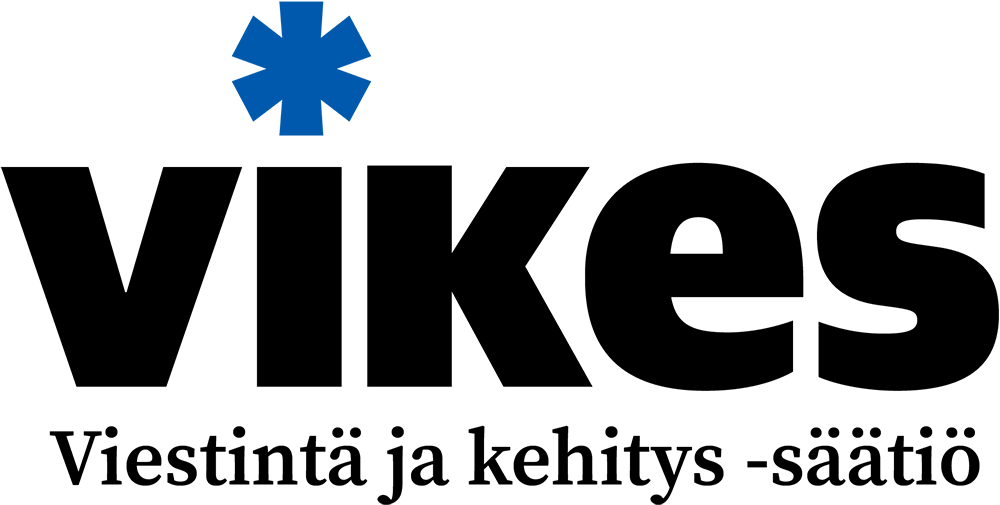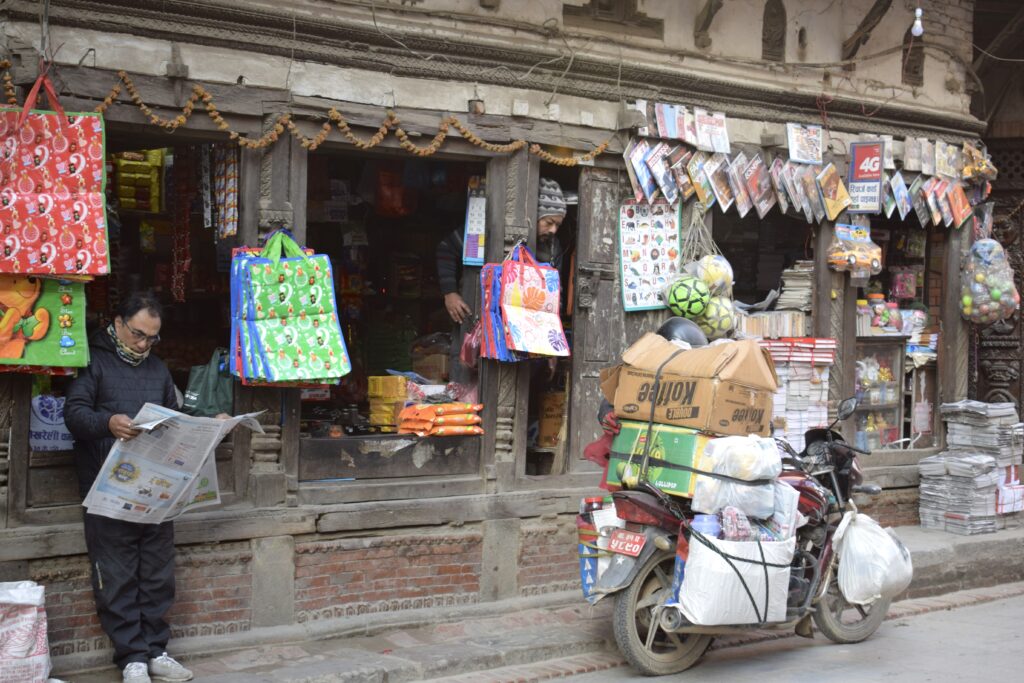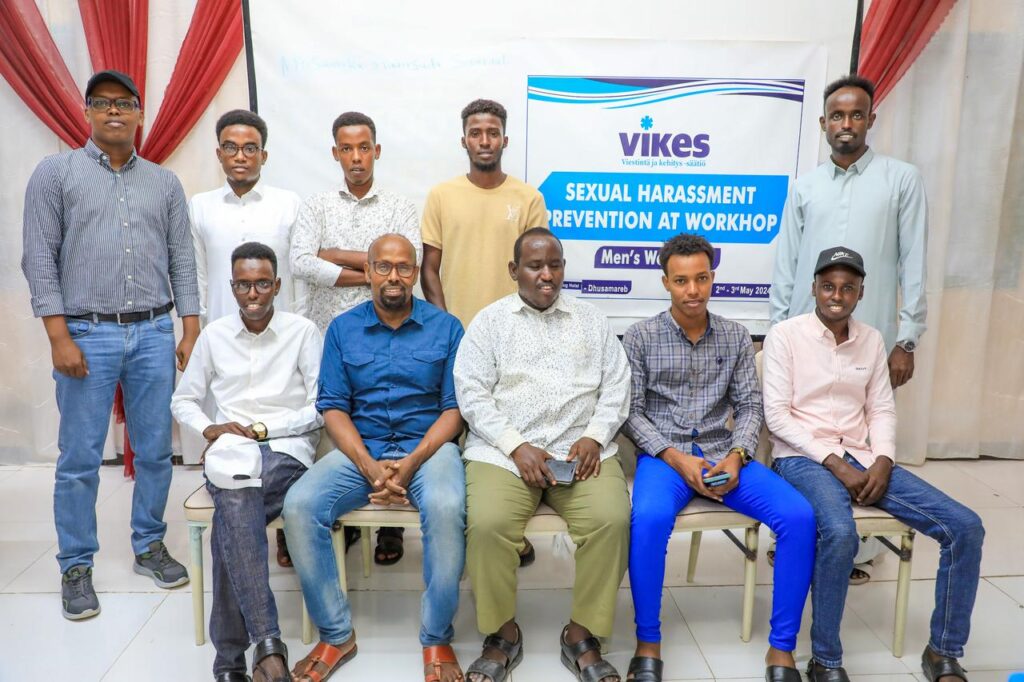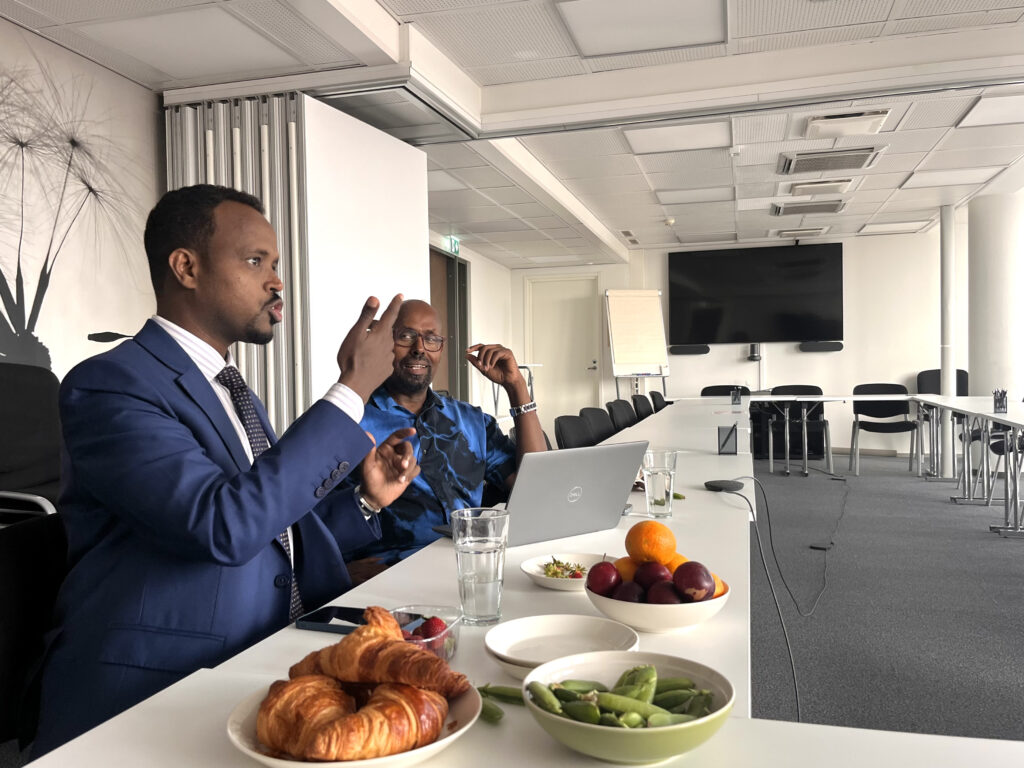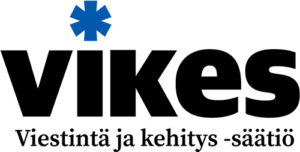Vikes trains journalists and students in Finland to promote sustainable development and good development journalism.
Vikes works in countries where freedom of the press is particularly under threat, but we work to protect and promote freedom of expression and a more diverse media also in Finland. We participate in public debate, work in many networks and train journalists and student journalists.
For years, a major focus of our training has been sustainable development and journalism. We provide journalists and aspiring journalists with the information, tools and research connections they need to report on complex, interdependent phenomena and their impact on our daily lives, and to contribute to a more sustainable future.
At the beginning of 2023, a three-year cooperation project was launched with the University of Tampere’s School of Journalism. The collaboration will explore how journalism can both promote sustainability and be sustainable, with the aim of developing and embedding sustainable journalism education and research not only at the University of Tampere, but also wider in Finland.
What is sustainable development?
There is a lot of talk about sustainable development, but what does it really mean? Many people associate the concept primarily with climate and environmental issues, but it is much broader than that.
In a nutshell, sustainable development means that in the decision-making and in concrete actions the environment, people and the economy should be taken equally to account Sustainability is also strongly linked to the idea of planetary boundaires and human adaptation to nature’s finite resources – to ensure a good life for future generations.
In concrete terms, sustainable development is promoted through the UN Agenda 2030. The Agenda consists of 17 goals agreed by UN member states that should guide decision-making and funding in all member states until 2030. All 17 goals are presented in more detail on the UN Alliance Finland website.
UN Sustainable Development Goals
The UN’s Sustainable Development Goals (SDGs) include poverty and hunger eradication, education, environment, health, equality, consumption and peace, all of which are strongly interlinked.
So, for example, when discussing global migration, you cannot ignore the consequences of climate change: reduced harvests, increased rainfall or rising sea levels may force people to leave.
Or the No Hunger goal cannot be achieved without climate action and without soil and marine conditions, as Marikki Karhu (formerly Stocchetti), Secretary General of the Commission for Development Policy, says in the video introducing the 2030 Agenda.
Video produced by Vikes and Oneworld Finland on the UN’s Agenda 2030.
The Sustainable Development Goals are binding on all countries in the world, and the main responsibility for implementing the 2030 Agenda lies with countries. But the ambitions are so broad that if they are to be achieved, local government and businesses, for example, must be involved.
And of course we need individuals also. The role of the individual should not be over-emphasised, as major structural changes are really needed, but neither should it be underestimated: individuals are voters, consumers, workers, educators – and ultimately behind all decisions.
Can journalism also be sustainable?
Journalists and the free media also have an important role to play in promoting sustainable development, both as communicators and as watchdogs of power. High-quality journalism influences people’s attitudes and gives a comprehensive picture of the state of the world: both problems and possible solutions. On the other hand, the media monitors the actions of decision-makers and whether their decisions support the sustainability of society.
“The media also has an important responsibility in what issues it raises in the social debate – and how and in what spirit these issues are discussed,” says sustainable economy expert Outi Hakkarainen from the umbrella organisation of development organisations Fingo in the Agenda 2030 video above.
The Fojo Media Institute at the Swedish Linné University has introduced the concept of sustainable journalism: the premise is that a sustainable society needs journalism that highlights sustainability challenges. Sustainable journalism also suggests that the two huge sustainability crises of today are intrinsically linked.
“First, there is the crisis of social sustainability, manifested in climate change, democratic deficit, poverty, inequality and armed conflict. The second is the crisis of sustainability in journalism, with declining revenues, suppression of free media, disinformation, clickbait journalism and a loss of trust in the media,” says the “father” of sustainable journalism Lars Taller from Fojo, .
According to Tallert, transforming traditional journalism into sustainable journalism is challenging because it requires changes to the prevailing news criteria and logic, i.e. the media supporting the status quo and the institutions in power, and focusing on geographically close, sudden and negative events.
Sustainable journalism also expands the role and importance of journalism in society.
“Journalism has traditionally been seen as the cornerstone of democracy. The sustainable journalism paradigm also sees journalism as the basis for sustainable development,” says Tallert.
The journalist must find the links between phenomena
As the different dimensions of sustainability are interlinked, journalism must also become more aware of the links between the different phenomena. This requires a kind of stereoscopic vision, the ability to analyse different aspects of phenomena and recognise their complex effects: for example, that economic good can mean ecological evil.
“As new knowledge is gained, it is important to realise that what was once considered positive can have a very negative side. Things are rarely just good or just bad,” science journalist and non-fiction writer Mikko Pelttari told journalism students at the Vikes training.
Finnwatch’s climate expert Lasse Leipola has previously worked as a climate journalist, but he believes that sustainable development issues cannot be the responsibility of specialist journalists alone.
“In this world, everything is connected, whether it’s climate, plastics or development, and every professional journalist should recognise those connections,” Leipola said, speaking at the seminar “Sustainable development and journalism – what skills do journalists of the future need?”.
The aforementioned journalistic “stereo vision” is one way of trying to identify the interdependence of complex phenomena, but since a journalist cannot be an expert in every field, the ability to find suitable experts and identify sources of reliable information is more important when dealing with complex issues.
For tips on how to find information and guidance on the whole story-making process from a sustainable development perspective, see the online course Future Journalists – Journalism for Sustainable Development, produced by Vikes in cooperation with the Maailma.net news site (the course is in Finnish).
Development journalism prize encourages new ways of thinking
Vikes also encourages journalists to produce quality journalism on development issues by awarding the annual Development Journalism Award in cooperation with the Finnish Red Cross, the Finnish Journalists’ Union and the Helsingin Sanomat Foundation. At the same time, the visibility and appreciation of development journalism will be increased.
The prize is open to journalistic work that reforms public opinion and thinking and offers new and surprising perspectives on the realities of emerging countries.
In January 2021, the first Development Journalism Prize was awarded to Tanja Tervonen for her story “Ship of the Lost” in Image magazine , which takes the reader to the sources of migration.
In 2022, the prize was awarded to journalists Karoliina Knuuti and Mika Niskanen for their article “A carbon-neutral country with a carbon-averse nation – are we outsourcing our emissions?” in the World Economic Outlook. The story opens up about how many consumer products made in China that are bought in Finland are counted as Chinese instead of Finnish emissions.
The third prize was awarded in early 2023 to the blog Afghan Woman’s Gaze, produced jointly by Finnish and Afghan women journalists.
